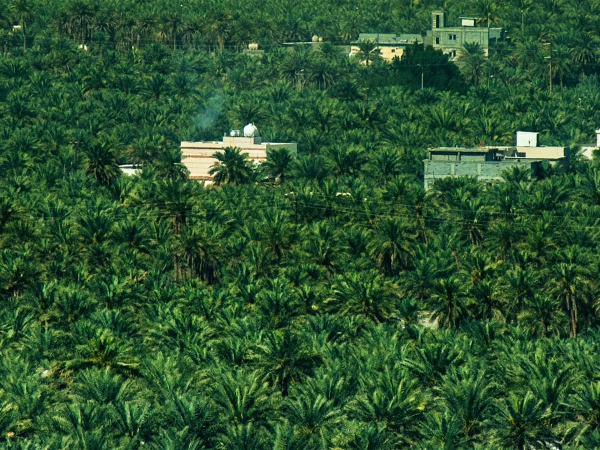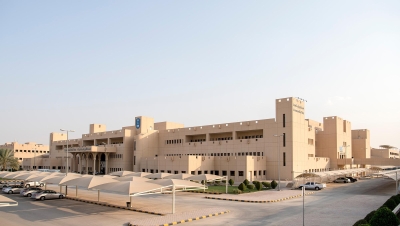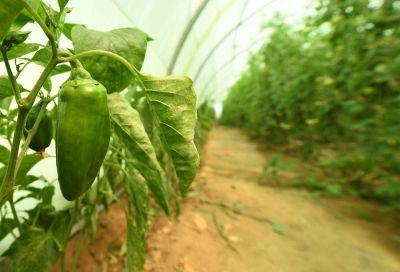

Palm Propagation in the Kingdom of Saudi Arabia refers to the process of increasing the number of palm trees in the Kingdom through various methods, including sexual propagation, vegetative propagation, and tissue culture propagation.
The total number of palm trees in the Kingdom exceeds thirty-four million, producing more than 1.6 million t of various types of dates, according to a 2023 report by the Ministry of Environment, Water, and Agriculture. Additionally, date exports and their derivatives saw a 14 percent increase in the same year, reaching SAR1.462 billion, with the number of countries importing dates from the Kingdom rising to 119.
Sexual propagation method
Also known as 'traditional propagation' or 'seed propagation,' it is one of the ancient methods for palm propagation. One of the advantages of sexual propagation is that it is an easy, convenient, and cost-effective method for plant propagation. Seed propagation produces male trees that flower in the fourth year, while female trees flower between the seventh and tenth years. This method results in various types of palms with different characteristics, commonly known as 'Nabtat, Nabout', and unknown varieties called 'Deglet', 'Majhool', and 'Lawn', all named after their cultivators, such as Nabtat Seif and Deglet Ali. However, disadvantages of sexual propagation for palms include delayed fruiting, which can take between nine to ten years, and sometimes up to fifteen years. It is also difficult to distinguish between male and female trees from seeds before they fruit. When fruiting occurs, approximately 30 to 40 percent of the trees are female, while 60 percent are male, with most producing low-quality trees and fruit.
The method of seed propagation is traditionally practiced in Najd, Najran, and al-Madinah al-Munawwarah Provinces, and it does not have a specific time of year for planting. During the harvest season, palm growers select mature seeds and place three to five seeds in a moist pit, no deeper than fifteen cm. The date palms grown using this seed planting method are referred to as 'Naboot' and 'Nashu'. It is also preferred to plant seeds during the palm harvesting period, as the seeds tend to sprout wherever they are thrown. However, palm growers plant them near irrigation channels and watercourses.
Vegetative propagation method
The vegetative propagation method allows for the production of varieties similar to the parent plants from which they are derived, making it one of the most successful traditional methods for palm propagation, both in the past and present. This method involves the use of offshoots, known as pups or suckers.
The selected offshoots for propagation are referred to as 'Bint, Farakh, Wadiyah, Khelfah, and Sanu.' It must meet several criteria: they should be between three to seven years old, weigh no more than thirty kg, have a woody stem length of at least seventy-five cm, a diameter of twenty to thirty cm, come from a 'Baali' palm, be of good quality, free from diseases and pests, and have a healthy and actively growing main bud.
The vegetative propagation using offshoots typically occurs during February and March, in the fall, or between August and September. The offshoots are separated from the parent plants using a sharp tool by trained workers, ensuring a clean, smooth cut without cracks. These offshoots are then transplanted to specialized nurseries or permanent planting sites for a period of one to three years before being moved to their final location. It is important to trim the remaining fronds to the midpoint and tightly tie the ends to prevent any disruption during pollination and to protect the heart of the palm. After planting, the offshoots are watered generously, with subsequent irrigation adjusted according to weather conditions and soil type. Regarding the sucker that grows from the trunk of the mother palm, it typically lacks a developed root system, which makes it less commonly used in date palm propagation. This type of offshoot is known by various names, including 'ta'oun', 'daml', and 'radeef'.
Tissue culture propagation method
It is a modern technique used to propagate disease-free plants of certain species and to produce many plants of a specific variety where traditional propagation methods, such as offshoot production, are limited, as is the case with the Barhi variety. Palm propagation through tissue culture in the laboratory involves three methods:
- 'Tissue culture propagation through somatic embryogenesis': In this method, the offshoot is dissected and stripped of its leaves until the apical bud, measuring (three by four cm), is exposed. The bud is then sterilized and divided into small pieces, each measuring approximately (0.5 × 0.5 × 0.5 cm). These pieces are placed in a nutrient-rich medium that contains essential elements for plant growth and growth regulators (auxins and cytokinins), which promote cell proliferation and lead to the formation of a 'callus' layer.
The propagation process occurs in a dark environment where an incubator is used to control the temperature. The nutrient medium is renewed every month, allowing the somatic embryos to form. These embryos eventually develop into plants with roots, at which point they are transferred to soil. During the acclimatization stage, the plants are moved to an air-conditioned greenhouse for a period of 1.5 to two years before being planted in permanent soil. The entire propagation process takes approximately three to four years.
- 'Tissue culture propagation through bud formation': This method reduces the likelihood of genetic variations from one variety to another. It differs from the 'tissue culture propagation through somatic embryogenesis' in terms of the composition of the nutrient medium and the specific parts of the growing tip that are separated for propagation.
- 'Tissue culture propagation through flowering': In this method, flowers are cultured in a nutrient medium, from which date palms eventually grow. The advantages of this method include the production of easily transportable, high-quality, and high-value date palms. This method allows for year-round cultivation, producing disease-resistant plants that are free from pests and serious diseases, such as the red palm weevil and its larvae. Additionally, the loss rate during cultivation is lower compared to natural offshoot planting. However, one major drawback is the poor acceptance of pollination, which is attributed to the standard practices used in tissue culture laboratories. Moreover, the lower prices of tissue-cultured date palm offshoots have led many palm growers to prefer traditional planting methods over tissue culture propagation.
Related quizzes

